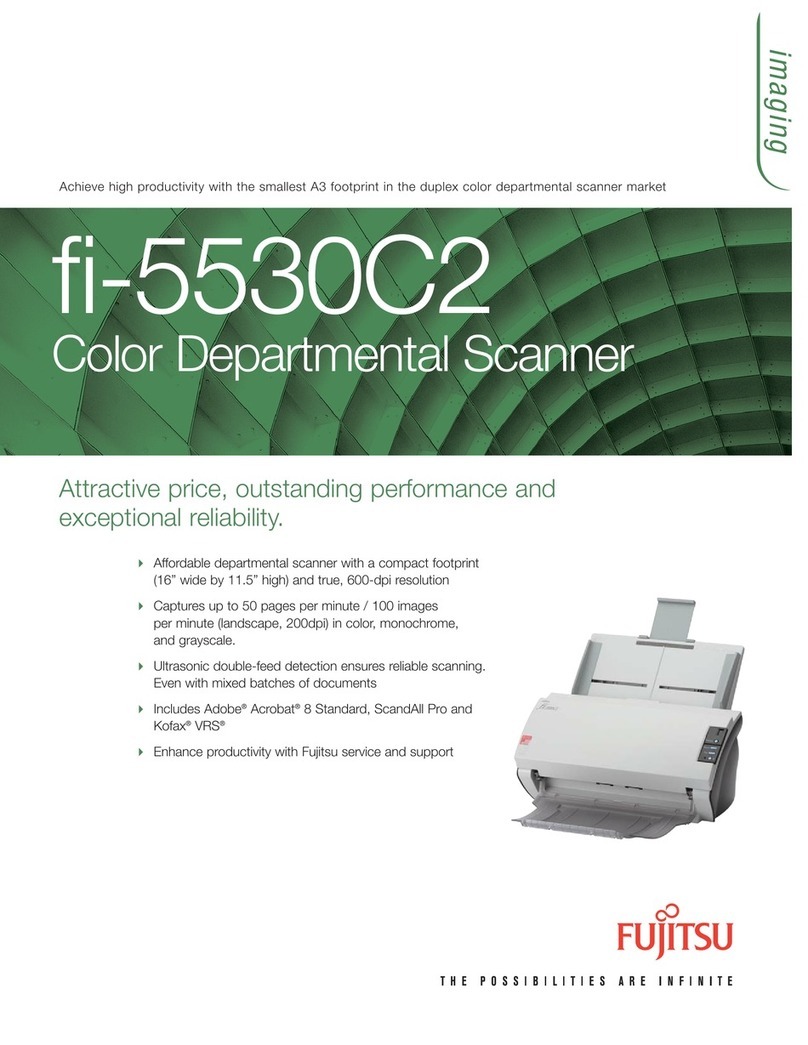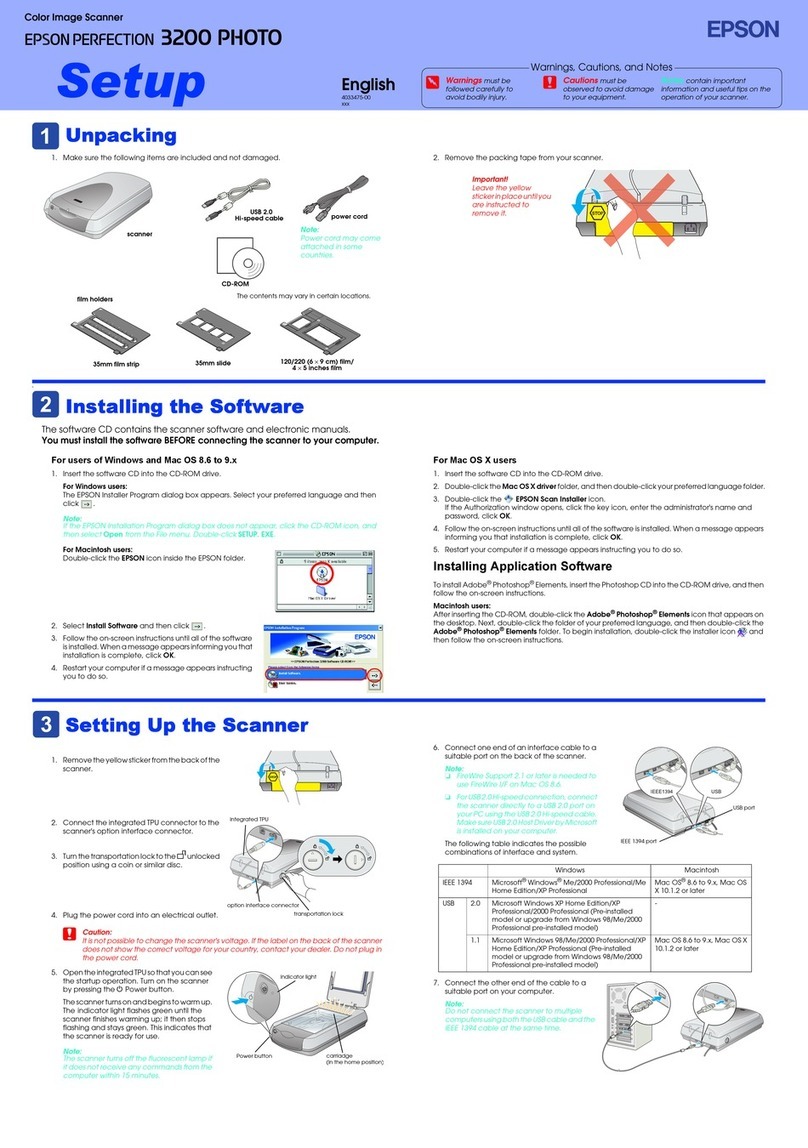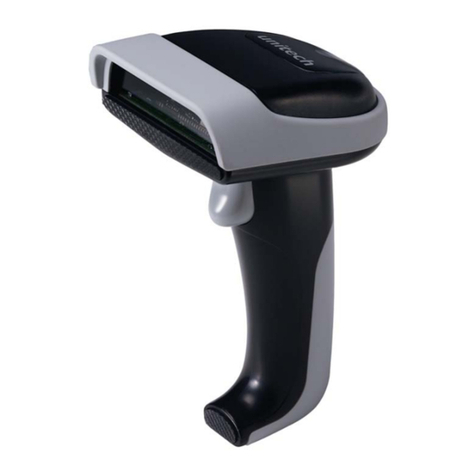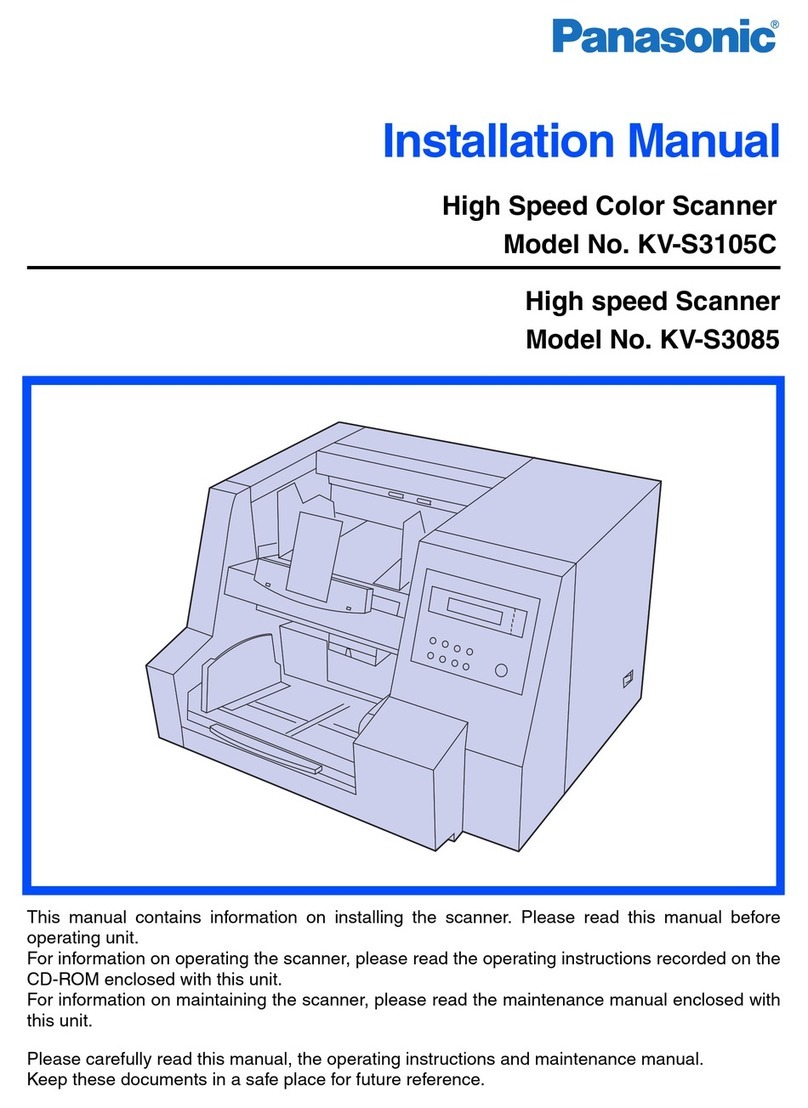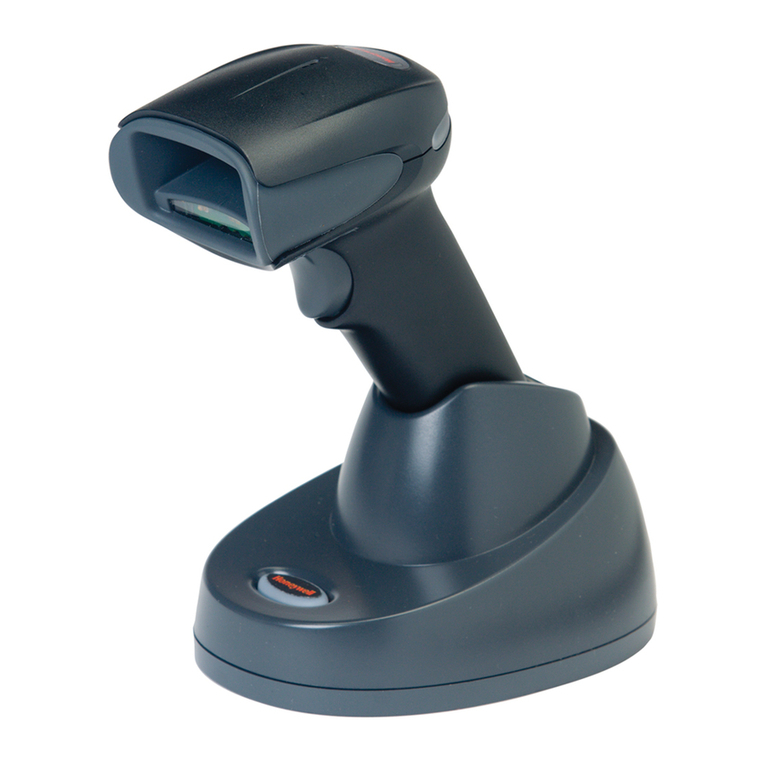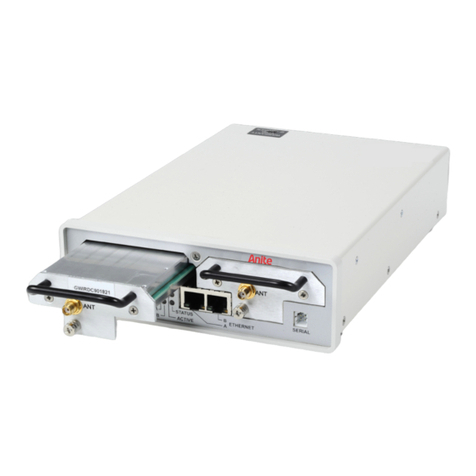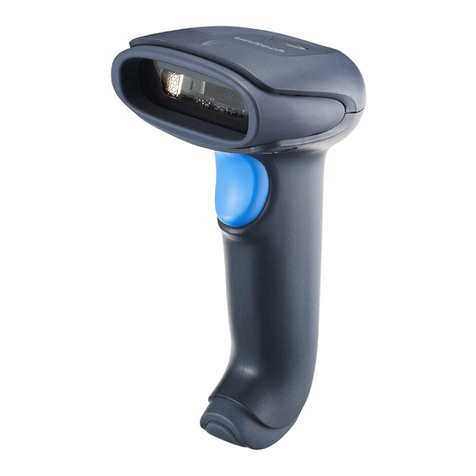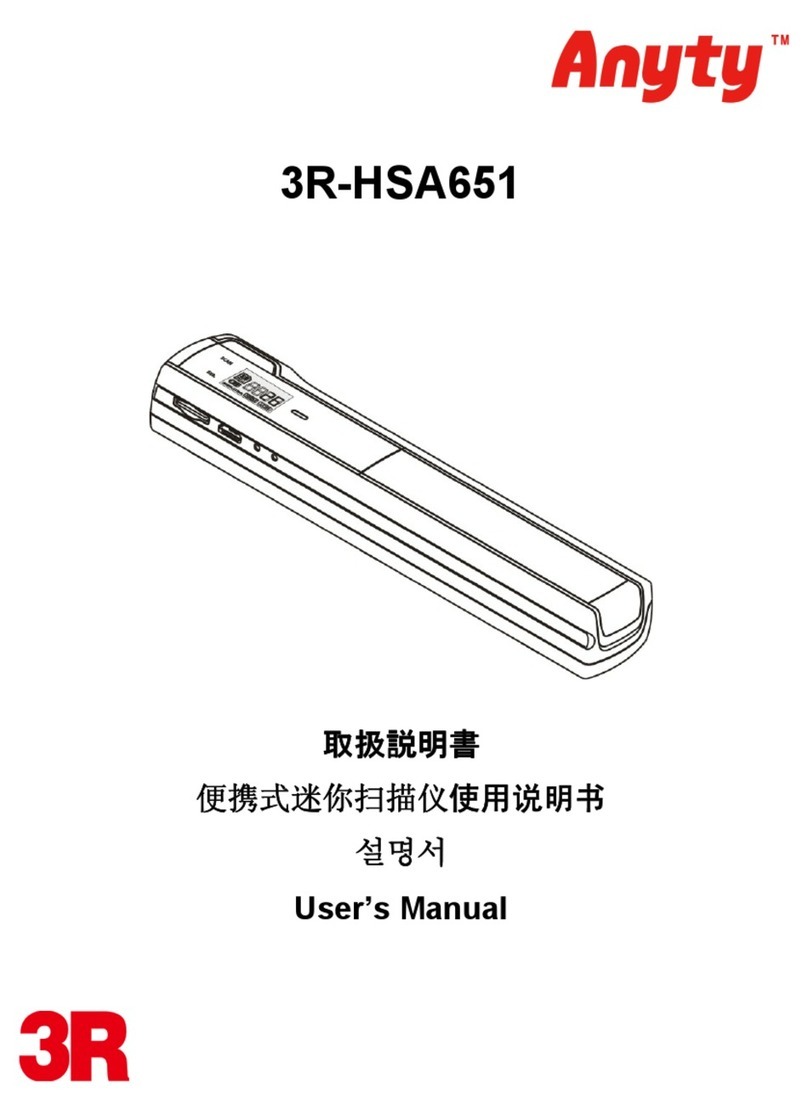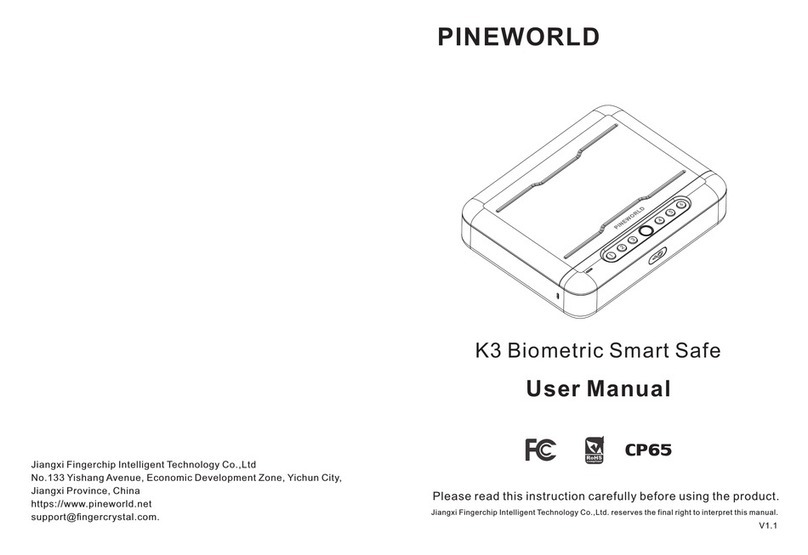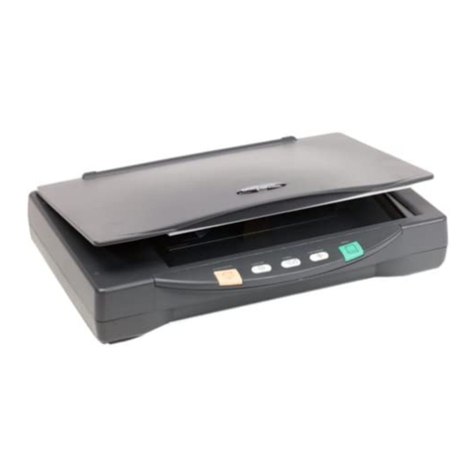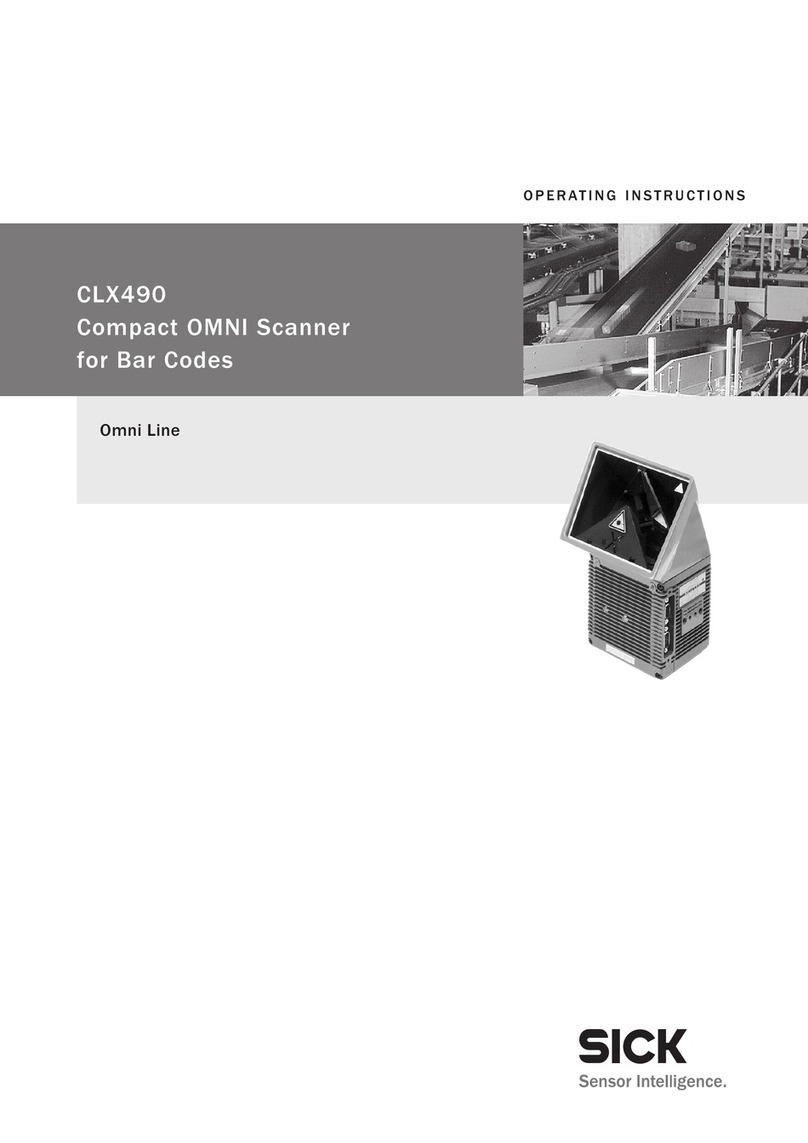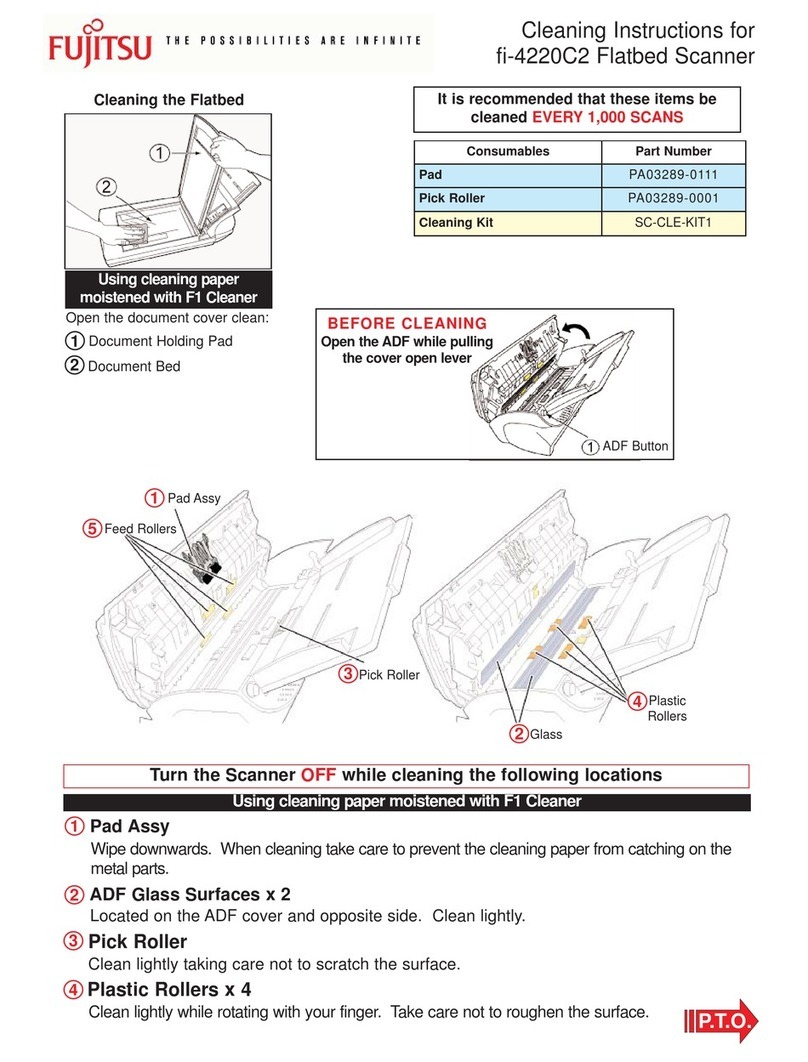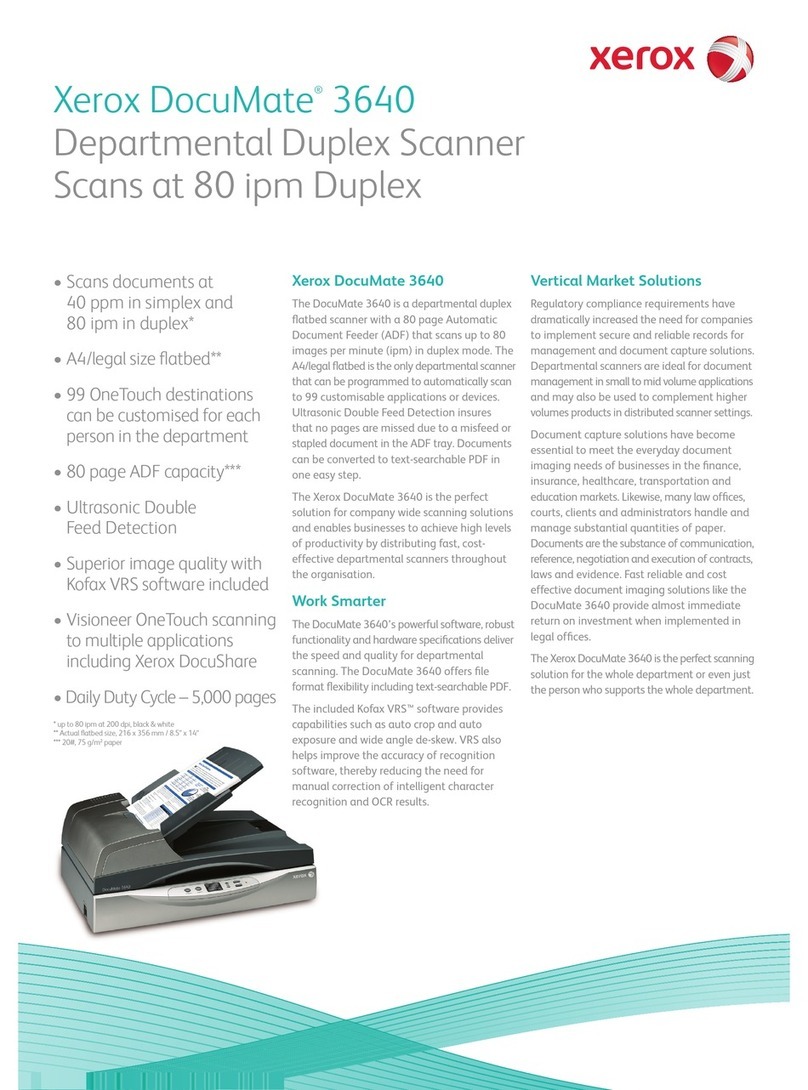Spector IN-02 User manual

Spector Sci-Tech LLC
IN-02 METAL STRESS SCANNER
USER MANUAL
Russia – Ufa – 2020
2

3
CONTENTS
Page
1. Purpose .............................................................................. 4
2. Technical specifications ..................................................... 5
3. Device and principle of operation....................................... 7
4. Safety instructions............................................................ 17
5. Preparing the metal stress scanner for work...................... 18
6. Operation procedure......................................................... 19
6.1. Measurement of mechanical stress of metal of steel
products, metal structures................................................. 19
6.2. Charging or replacing batteries .................................. 21
7. Maintenance service......................................................... 25
8. Troubleshooting ............................................................... 26
9. Transportation and storage rules....................................... 28
Appendix. Mechanical and magnetic parameters of frequently
arrived Russian grades of structural steels ............................ 29
4
This operating manual allows you to acquaint you with
the device and operation of the IN-02 metal mechanical stress
scanner (hereinafter referred to as the stress scanner) and sets
the rules for its operation, transportation and storage,
compliance with which ensures that it is maintained in
constant readiness for operation.
1. PURPOSE
1.1. The metal mechanical stress scanner IN-02 of the
scanning type is designed for continuous monitoring of the
value of the mechanical stress of the metal of a steel product, a
metal structure made of structural steel, according to the
distribution of the field strength of the residual magnetization
of the metal.
1.2. The stress scanner can be used in field, workshop
and laboratory conditions.
1.3. Sources of electromagnetic industrial interference
must be removed from the stress scanner at a distance of at
least 3 m.
1.4. Degree of protection against penetration of solids
and water for the stress scanner IP41 according to GOST
14254-80.
1.5. Display of measurement results are digital in units
of the measured value of the field strength of the residual
magnetization of the metal (mT), or the mechanical stress of
the metal (MPa).
1.6. Indication of readouts is liquid crystal graphic
display with backlight for working in conditions the natural
environment lighting is not enough.
1.7. According to the operating conditions, the stress
scanner belongs to the type of climatic version of UHL 3.1
according to GOST 15150-69 and can work steadily when:

5
- ambient temperature from minus 20ºC to plus 70ºC,
- relative humidity up to 98 % at +25ºC,
- atmospheric pressure from 84 kPa to 106.7 kPa.
2. TECHNICAL SPECIFICATIONS
2.1. The range of measurement of the field strength of
the residual magnetization of the metal, mT: - from 0 to 20.00
2.2. Measuring range of mechanical stress of metal of
steel products, metal structures, MPa: - from 0 to σB
where σB is the ultimate strength of the metal.
2.3. The limit of the allowed basic error in measuring
the mechanical stress of the metal of a steel product or metal
structure is determined by the formula:
0.5 + 0.05 σi (2.1)
where σi is the stress scanner readout in MPa.
2.4. The metal stress scanner is powered by 3x18650
elements with total nominal electric voltage of 11.1V.
2.5. Electric current consumed from a freshly charged
PP3 element, mA:
- when working without the display backlight - 16 ± 0.5
- when working with the display backlight - 68 ± 0.5
2.6. Operating time of stress scanner when powered
from freshly charged element PP3, in hours, at least: - 45
2.7. Time to set the metal stress scanner's operating
mode, s, not more than: - 30
2.8. Maximum speed of the inspection: - 7 m/min
6
2.9. Time of continuous operation of the stress scanner,
h, not less than: - 12
2.10. Battery charge time, minutes, not more: - 250
2.11. The stress scanner has a memory card with a
capacity of more than 60000 measurements.
2.12. The stress scanner has a standard output for
transmitting measured information to a personal computer via
a mini-USB connector.
2.13. Overall dimensions, mm, not more than:
- Electronic unit (length × width × thickness)
- 210×110×44
- Magnetic measuring unit (length × width × height)
- 260×150×30
- Magnetic measuring unit cable length -1500±200
2.14. Weight, g:
- Electronic unit with battery - 550
- Magnetic measuring unit - 1300
2.15. Average recovery time, h: - 5
2.16. Full average service life, years: - 10
2.17. Established service life, years: - 2

7
3. DEVICE AND PRINCIPLE OF OPERATION
3.1. The principle of operation of the metal stress
scanner is based on the measurement of the magnetic field
strength over the surface of the residual magnetized area of the
metal (the field strength of the residual magnetization of the
metal).
3.2. The block diagram of the stress scanner is shown
in Fig.3.1.
Fig.3.1. Block diagram of IN-02 the metal stress scanner
1 – magnetic measuring unit, 2 – integrated Hall effect
sensor chip, 3 – pulse voltage stabilizer, 4 – scaling amplifier
combined with a low-pass filter, 5 – microcontroller, 6 – travel
distance sensor, 7 – memory card, 8 – liquid crystal display.
The stress scanner works as follows. Magnetization of
the metal of a steel product or metal structure is carried out by
a constant magnetic field in the process of translational
movement of the magnetic measuring unit 1 along the
inspected surface of the metal.
The sensor with the integrated sensor 2, which is
located in the housing of the magnetic measuring unit 1, is
4 5
7
2
1
3 6
8
8
powered by a constant electric current from the pulse voltage
stabilizer 3. The electrical voltage from the output of the
sensor 2 is supplied via a scale amplifier combined with a low-
pass filter 4 to the input of the analog-to-digital converter of
microprocessor controller 5.
To tune out the effect of random changes in ambient
temperature on the stress scanner readings, the amplifier 4 has
an automatic gain control unit inspected by an electrical signal
coming from the output of the temperature sensor, which is
located inside the housing of the the sensor 2.
In the case of the magnetic measuring unit 1, a travel
distance sensor 6 is installed, the output of which is connected
to one of the logical inputs of the microprocessor controller 5.
One of the outputs of the microprocessor controller 5 is
connected to the electronic memory card slot 7, the other
output of the microprocessor controller 5 is connected to the
input of the graphic liquid crystal screen 8.
Fig.3.2. Appearance of IN-02 the metal stress scanner
1 – magnetic measuring unit, 2 – electronic unit.
1
2

9
3.3. The appearance of the stress scanner with a
magnetic measuring unit is shown in Fig.3.2.
3.3.1. The IN-02 stress scanner consists of a magnetic
measuring unit 1 and an electronic unit 2, which are connected
by a flexible cable.
3.3.2. On the front panel of the electronic unit 2
(Fig.3.3) there is a graphic liquid crystal screen 3, a power
button 4, a screen backlight button 5, a button for switching
the measurement mode 6, a button for recording measurements
in electronic memory 7, and a button for holding
measurements on the screen 8.
3.3.3. The battery cover is located on the back of the
electronic unit 2 housing. In order to remove the batteries from
the battery compartment, you need to slightly press the latch of
the battery cover and pull it towards you.
3.3.4. In the upper part of the electronic unit housing,
there is a panel of connectors (Fig.3.3).
3.3.4.1. Connector 9 is used to connect the magnetic
measuring unit 1 to the electronic unit 2 of the IN-02 metal
stress scanner.
3.3.4.2. Connector 10 is used to connect a memory card
slot (uSD flash card) to the electronic unit of the IN-02 metal
stress scanner.
3.3.4.3. The mini-USB 11 connector is used for
transmitting measured data from the IN-02 stress scanner to a
personal computer and receiving service information from the
computer.
3.3.4.4. Connector 12 is used to connect the charger's
power adapter to the electronic unit 2 for recharging the
battery, which consists of 3x18650 batteries and is located
under the cover on the back of the electronic unit 2.
10
Fig.3.3. Location of controls and connectors of the
electronic unit of IN-02 the metal stress scanner
3 – graphic liquid crystal display, 4 – power on button,
5 – screen backlight button, 6 – measurement mode switch
button, 7 – measurement recording button, 8 – measurement
hold on the screen button, 9 – connector for connecting the
magnetic measuring unit, 10 – memory card slot, 11 – mini-
USB connector, 12 – connector for charger network adapter.
3
4 5 6 7 8
9
11
10
12

11
3.4. Assignment of controls and indication
3.4.1. Graphic liquid crystal screen 3 is used to screen
graphic and digital information during the operation of the
metal stress scanner.
3.4.2. Button 4 is used to turn on the electric power of
the metal stress scanner.
When you turn on button 4, the logo of Spector Sci-
Tech LLC appears on the stress scanner screen for a short time
with information about the type of stress scanner (Fig.3.4 a).
After setting the measurement mode, the stress scanner
screen displays digital readings of the sensor output signal (in
mT or MPa), time, battery charge level of the metal stress
scanner, and service messages (Fig.3.4 b, c).
3.4.3. Button 5 is used to turn on the stress scanner
screen backlight. When you turn on button 5, the screen is
illuminated with additional light to improve the screen of
digital readings.
3.4.4. Button 6 is used to switch the measurement mode
of the metal stress scanner.
When button 6 is enabled, the stress scanner switches
to dynamic measurement mode. In dynamic measurement
mode, the stress scanner screen displays a digital reading and a
graph of the change in the value of the sensor output signal
during continuous scanning of the metal surface (in mT or
MPa), the set measurement mode, the battery charge level, the
current time and service messages (Fig.3.4 c).
When button 6 is turned off, the stress scanner switches
to static measurement mode. In the static measurement mode,
the stress scanner screen displays a digital indication of the
sensor output signal value (in mT or MPa), measurement
mode, battery charge level, the current time and service
messages (Fig.3.4 b).
12
(a)
(b)
(c)
Fig.3.4. Displaying information on the IN-02 stress
scanner screen when the electric power is turned on (a) and
after the static (b) and dynamic measurement modes are set (b)

13
(a)
(b)
Fig.3.5. Displaying information on the IN-02 stress
scanner screen when recording Sensor readings to the memory
in static (a) and dynamic (b) modes
Note: in the static mode of the metal stress scanner, the
electronic unit can be connected to the IN-01m stress scanner
sensor instead of the magnetic measuring unit.
The connection of this Sensor expands the scope of the
stress scanner due to the possibility of:
- magnetic inspection of the stressed state of metal of
steel products and structures with a complex surface shape;
- inspection of the tightening force of steel studs and
bolts in threaded connections;
14
(a)
(b)
Fig.3.6. Displaying information on the IN-02 stress
scanner screen when the measurement hold button is pressed
in the static (a) and dynamic (b) modes
- determination of the group of structural steels that
make up metal structures (ordinary quality steel, high-quality
steel, alloy steel, etc.);
- operational evaluation of the structural steel grade of
the metal structure.
3.4.5. Button 7 is used to save measurements in the
metal stress scanner's electronic memory.
3.4.5.1. A single on-off button 7 in static measurements
(off button 6) in the electronic memory of the stress scanner is

15
recorded on screen digital indication value captured from
sensor (Fig.3.5 a).
3.4.5.2. When the button 7 is turned on in the dynamic
measurement mode (when the button 6 is turned on), the
electronic memory of the stress scanner continuously records
the readings obtained when scanning the metal surface and
displayed on the stress scanner screen as a graph (Fig.3.5 b).
After the button 7 is turned off, the recording of the
transmitter readings in the electronic memory of the stress
scanner stops.
3.4.6. Button 8 is used to hold the measurements on the
screen. When the button 8 is turned on, the continuous
measurement of the Sensor signal is stopped, and the "Stop"
message appears on the stress scanner screen (Fig.3.6). When
the button 8 is turned off, the continuous measurement starts
again, and the "Stop" sign on the screen disappears.
3.4.7. When USB data cable connected to the USB port
of a personal computer to the mini-USB 11 connector,
information about establishing a connection between the IN-02
metal stress scanner and the personal computer appears on the
screen (Fig.3.7).
Fig.3.7. Displaying information on the IN-02 stress
scanner screen when connected to personal computer
16
Using the IN-01M CONNECT application pre-installed
on a personal computer, the measured information from the
metal stress scanner's memory is transmitted via a cable and
stored in the personal computer's memory.
3.4.8. When the charger's network adapter is connected
to connector 12 of the electronic unit, the stress scanner screen
displays graphical information about the process of charging
the battery (Fig.3.8).
Fig.3.8. Indication of the battery charge process on the
IN-02 stress scanner screen
When the battery is charged, the stress scanner screen
will screen "Charging completed", which means that the
network adapter can be disconnected from the metal stress
scanner.
3.5. Magnetic measuring unit
3.5.1. The magnetic measuring unit of the stress
scanner is used for magnetizing the inspected section of metal
of a steel product or metal structure with a constant magnetic
field in the process of translational movement along the
inspected surface of the metal.
3.5.2. The magnetizing unit of the magnetic measuring
unit of the stress scanner is non-volatile and is a system of

17
permanent magnets made of ferrite iron and having high
magnetic energy. The magnetic poles of the magnetic
measuring unit are protected by a non-magnetic overlay made
of "Melchior" type alloy.
3.5.3. The Hall effect sensor is located in the housing
of the magnetic measuring unit next to the magnetizing system
and measures the field strength of the residual magnetization
above the metal surface.
The output of the Hall effect sensor is connected to a
flexible electrical cable that has a connector for connecting to
the electronic unit of the metal mechanical stress scanner.
3.5.4. To bring the magnetic measuring unit of the
stress scanner into forward motion, the housing is equipped
with a handle.
4. SAFETY INSTRUCTIONS
4.1. Persons who have studied sections 2-5 of this
operating manual, as well as those who have received
instructions on safety and fire safety when working with
electrical installations, are allowed to operate, maintain and
repair the stress scanner.
4.2. Replacement of elements of the electrical diagram
of the stress scanner at the setup stage should be carried out
when the power supply voltage is switched off.
4.3. When working with the stress scanner, the
requirements of the Rules of technical operation of electrical
installations of PTE-84 consumers and Safety rules for the
operation of electrical installations of PTB-84 consumers must
be met.
18
5. PREPARING THE METAL STRESS SCANNER
FOR WORK
Preparation of the stress scanner for work includes
preparation of the electronic unit, magnetic measuring unit and
preparation of the inspected metal surface of the steel products
and structures.
5.1. Before turning on the stress scanner after
transporting it in cold weather, keep the stress scanner under
normal conditions of use for at least 2 hours.
5.1.2. Insert freshly charged 18650 batteries into the
battery compartment of the electronic unit, observing the
polarity of the contacts.
5.1.3. Connect the magnetic measuring unit to the
electronic unit of the IN-02 stress scanner using the connector,
inserting the cable part of the connector into the instrument
part of the connector until it stops.
5.1.4. Turn on the IN-02 metal mechanical stress
scanner by pressing the power button. In this case, the screen
should light up, where the service information appears and the
value of the measured signal is set (see section 3.4.2).
5.1.5. In low light conditions, to improve the visibility
of the readings, turn on the screen backlight button.
5.2. Preparation of the magnetic measuring unit
consists in external inspection and cleaning of the surface of
the magnetic poles, Hall effect sensor from stuck metal
particles and dirt. To do this, use a rag.
5.3. Preparation of the inspected metal surface of a
steel product or metal structure consists in pre-cleaning it from
the remnants of insulation, dirt, oil and metal particles. To do
this, use an appropriate tool, rag, sandpaper, or file.

19
6. OPERATION PROCEDURE
6.1. Measurement of mechanical stress of metal of
steel products, metal structures
Measurement of the mechanical stress of the metal of a
steel product or metal structure consists in magnetizing the
inspected area of the metal with a constant magnetic field,
measuring the strength of the field of residual magnetization
over this surface, and evaluating the mechanical stress of the
metal.
Note: the dynamic measurement mode of the stress
scanner is the main mode of operation for continuous
monitoring of the stress-strain state of the metal of extended
steel products and structures.
The static measurement mode of the stress scanner is
auxiliary and is used mainly to refine location, verify and
confirm the surface of a steel product or structure where an
area with an increased stressed state of the metal is detected.
6.1.1. Enable the dynamic measurement mode of the
metal stress scanner. Install the magnetic measuring unit at the
beginning of the inspected area of the metal surface of the steel
product, metal structure and smoothly bring it into
translational motion along the inspected surface.
6.1.2. Measure the values and get a graph on the stress
scanner screen of the distribution of the field strength of the
residual magnetization of the metal (in mT) on the inspected
surface of the steel product, metal structure.
6.1.3. Based on the analysis of the graph of the
distribution of the residual magnetic field strength of the metal
on the inspected surface of the steel product, structure:
- presence of areas with increased stressed state of the
metal;
20
- coordinates of the location of areas with increased
stressed state of metal on steel products, metal structures;
- actual mechanical stress value in the area with
increased stressed state of the metal.
6.1.3.1. The stress scanner readings in the area with
increased stress-strain state of the metal will have the highest
values.
6.1.3.2. The location of the amplitude on the graph of
field strength distribution of the residual magnetization of
metal will correspond to the location of the region with the
greatest mechanical stress of the metal on the surface of steel
products, steel structures.
6.1.3.3. To estimate the value of mechanical stress in
an area with an increased stress-strain state of the metal:
- determine the value of the signal amplitude according
to the graph on the stress scanner screen corresponding to the
area with an increased stressed state of the metal;
- set the value of the mechanical stress of the metal (in
MPa) for the received signal amplitude in the area with an
increased stressed state of the metal. For this purpose, the
curves of the dependence of the field strength of the residual
magnetization on the value of the mechanical stress of the
metal, previously obtained on standard samples of structural
steels, are used.
Note: if the calibration constants previously obtained
for structural steels of different grades are stored in the
electronic memory of the stress scanner during its manufacture
(see Appendix), the readout the stress scanner screen will
correspond to the value of the mechanical stress of the metal
for this steel grade (in MPa).

21
6.1.4. The value of the signal amplitude in an area with
an increased stressed state of the metal can also be estimated in
the static measurement mode of the metal stress scanner.
6.1.4.1. To enable the static measurement mode of the
metal stress scanner. Re-install the magnetic measuring unit on
the metal surface of a steel product or metal structure in an
area with an increased stressed state of the metal and smoothly
bring it into translational motion along the inspected surface.
6.1.4.2. Above the surface with the highest mechanical
stress of the metal, the digital readings on the stress scanner
screen take the highest values.
On the basis of these values, according to step 6.1.3,
the value of the mechanical stress of the metal in this area of
the surface of the steel product, metal structure is estimated.
6.1.5. To measure the mechanical stress of the metal on
another section of the steel product, the metal structure should
repeat the operations prescribed in steps 6.1.1-6.1.4.
6.2. Charging or replacing batteries
6.2.1. As the charge of batteries decreases, in the
charge level screen area (see Fig.3.5) the current charge level
is set, and if it is lowered relative to the acceptable threshold
value, the Recharge battery! message appears on the screen.
When you reach that level you need to charge batteries, which
in the electronic connector block to connect the power adapter
cable of the charger and connect it to the network.
6.2.2. If it is necessary to completely replace the
batteries, turn off the power of the metal stress scanner, open
the battery cover of the electronic unit and remove the batteries
that have used up their life.
Insert freshly charged batteries, observing the polarity
of the contacts, and close the battery cover.
22
6.3. Working with metal stress scanner memory
6.3.1. The stress scanner is equipped with a memory
card to quickly save the results of a large number of
measurements. The measured values of the output signal of the
Sensor are sequentially recorded in the electronic memory of
the stress scanner.
6.3.2. To record the measured signal reading displayed
on the screen into the stress scanner memory is switched on
and off once (see Fig.3.3). In the process of recording the
stress scanner readings in electronic memory, the stress
scanner screen displays the inscription Record. After the
button 7 is turned off, the recording of readings in the
electronic memory of the stress scanner stops.
6.3.3. To record the measured signal readings displayed
on the screen in dynamic measurement mode (when the button
6 is enabled) to the memory card, the recording button is
enabled in memory 7 (see Fig.3.3). In the process of recording
stress scanner readings in electronic memory, the stress
scanner screen displays the inscription Record (Fig.3.5 b)
The measured data is saved to the built-in memory card
of the IN-01m metal mechanical stress scanner in files of the
DDMMYYYY type CSV, where DD is the current day, MM is
the month, and YYYY is the year.
The CSV (Comma Separated Values) format is a
common standard supported by MS Excel and compatible with
any text editor.
The data file consists of several series of measurements
that represent a sequence of records of measurement results
made continuously in a single pass (see table 6.1).
6.3.4. Transfer of data recorded in the metal stress
scanner electronic memory to a personal computer.
6.3.4.1. Turn on the stress scanner power with button 4.

23
Structure of IN-02 stress scanner data files Table 6.1
Beginning of file
Measurement time 1 Measurement 1
Measurement time 2 Measurement 2
… …
Measurement
series 1
Measurement time N Measurement N
Record separator (empty string)
Measurement time
(N+1) Measurement (N+1)
Measurement time
(N+2) Измерение (N+2)
… …
Measurement
series 2
Measurement time
(N+M)
Measurement
(N+M)
Record separator (empty string)
… … …
End of file
6.3.4.2. Turn on the personal computer and launch the
IN-01m CONNECT application.
6.3.4.3. Insert the connection cable into the mini-USB
connector of the electronic unit and connect it to the
corresponding connector of the personal computer, while the
stress scanner screen displays a message about establishing a
communication channel with the personal computer through
the mini-USB connector of the electronic unit (Fig.3.7).
6.3.4.4. In the IN-01m CONNECT application, open
the File menu and select Receive data.
24
After receiving information from the electronic
memory of the metal stress scanner, a graph of the distribution
of the measured values in the Cartesian coordinate system
appears on the screen of the personal computer.
6.3.4.5. To select the type of graphical screen of the
measured stress scanner values and to save them on a personal
computer, use the corresponding menu items of the IN-01m
CONNECT application, which are described in the program's
user guide.
6.3.5. To disconnect the stress scanner from the
personal computer, disconnect the cable from the mini-USB
connector of the electronic unit.

25
7. MAINTENANCE SERVICE
7.1. Maintenance of the stress scanner is performed by
technical personnel from the departments of the control and
measuring devices service (KIP) or similar.
7.2. Maintenance of the stress scanner consists of a
preventive inspection, scheduled maintenance, and routine
maintenance.
7.3. The frequency of planned inspections is set
depending on the production conditions, but at least once a
month. During a routine inspection, the fastening of all
components, the condition of controls and paint coatings, and
the integrity of the measuring transducer are checked.
7.4. Scheduled maintenance is performed after the
warranty period expires and then at least once a year.
Repairs include visual inspection of the stress scanner,
inspection of the internal state of the installation, verification
of the reliability of the contact connections, and removal of
dust and dirt. At the same time, all types of work are
performed, the need for which was identified during the
preventive inspection of the stress scanner. In the event of
failure of the electronic components of the stress scanner, they
must be replaced.
7.5. Current repairs are made during the operation of
the stress scanner. At the same time, faults detected during
routine inspection are eliminated by replacing or restoring
individual parts of the stress scanner (replacing radio elements,
restoring broken electrical connections, etc.).
26
8. TROUBLESHOOTING
8.1. Possible malfunctions and ways to fix them are
shown in table 8.1.
Table 8.1.
Possible
malfunction Probable cause Remedy
When the power is
turned on, there is no
information on the
screen
1. The battery is
low.
2. Poor contact in
the power supply
circuit.
Charge the
battery.
Replace the
battery.
Clean the contacts
in the battery
compartment.
When the stress
scanner is powered
on, the FAT32 error
status occurred
The file system of
the memory card
slot is different
Remove the
memory card from
slot and format its
file system on the
computer.
When the power is
turned on, the
undefined card status
occurred
Appears on the
screen if memory
card is Faulty
Replace the
memory card.
When the power is
turned on, "No
memory card"
Appears on the
screen if no card
presented inside
of the slot 10
Insert a memory
card into slot 10.
When you click the
record measurements
button, the message
"Error!" appears
Faulty memory
card
Replace the
memory card.

27
Possible
malfunction Probable cause Remedy
When installing the
sensor on a metal
surface, stress
scanner reading does
not change
There is a break
in the connection
of the cable to the
sensor.
The sensor is
faulty.
Find the place of
the break and, if
possible, fix it.
Replace the
sensor.
28
9. TRANSPORTATION AND STORAGE RULES
9.1. The stress scanner must be transported in a
package with the battery disconnected from the electronic unit.
9.2. Transportation of the packed stress scanner can be
performed in closed railway cars or containers, on motor
vehicles, as well as in heated compartments of aircraft.
9.3. The packed metal stress scanner must be fixed in
vehicles, and when using open vehicles, in case of short-term
transportation, it must be protected from the effects of
precipitation and water.
9.4. Placement and attachment of the packed stress
scanner in vehicles must ensure their stable position, exclude
the possibility of collision with other objects, as well as against
the walls of the vehicle.
9.5. Conditions of transportation:
- temperature, ºC - from minus 30 to plus 80
- relative humidity at a temperature of +35ºC, % - 95
9.6. The stress scanner in the transport package can
withstand shaking with an acceleration of 15 m/s2 at from 10
to 120 beats per minute or 7500 beats with the same
acceleration.
9.7. The packed stress scanner with the battery
disconnected from the electronic unit should be stored on racks
in a dry room in the absence of acid vapors, alkalis and other
aggressive impurities in the air.
9.8. Storage conditions in terms of the impact of
climatic factors should correspond to the requirements of the
Appendix L of GOST 15150-69.
9.9. The location of the stress scanner in storage should
ensure its free movement and access to it.
9.10. If the stress scanner is stored for more than 6
months, it should be released from the transport package and
kept in accordance with the above storage conditions in
consumer packaging.

29
Appendix. Mechanical and magnetic parameters of
frequently arrived Russian grades of structural steels
Table A.1
Нс, A/cm Steel
grade
B,
MPa
Y,
MPa
=0 =Y =B
Ст 3 350 210 1.7 5.0 6.0
09Г2С 470 325 3.0-4.0 7.5-7.8 9.5
17Г1С 520 350 4.0 10 11
Steel 20 420 230 3.8-4.5 8.0-10.5 12.0-13.5
10ХСНД 540 400 4-5 11.0-11.5 12-14.5
Ст Дс 650 400 5-6 8.0-8.5 10-11
Table A.2
Нr, mT Steel
grade
B,
MPa
Y,
MPa
=0 =Y =B
Ст 3 350 210 0.62 1.69 2.0
09Г2С 470 325 1.06-1.38 2.43-2.79 2.98
17Г1С 520 350 1.38 3.12 4.12
Steel 20 420 230 1.32-1.54 2.57-3.25 3.63-4.0
10ХСНД 540 400 1.38-1.7 3.38-3.5 3.63-4.24
Ст Дс 650 400 1.7-2.0 2.57-2.71 3.12-3.38
Accepted designations:
Y – metal yield limit (MPa),
B – the strength limit of the metal (MPa),
Нc – coercive force of the metal (A/cm),
Нr – the field strength of the residual
magnetization of the metal (mT).

Table of contents
